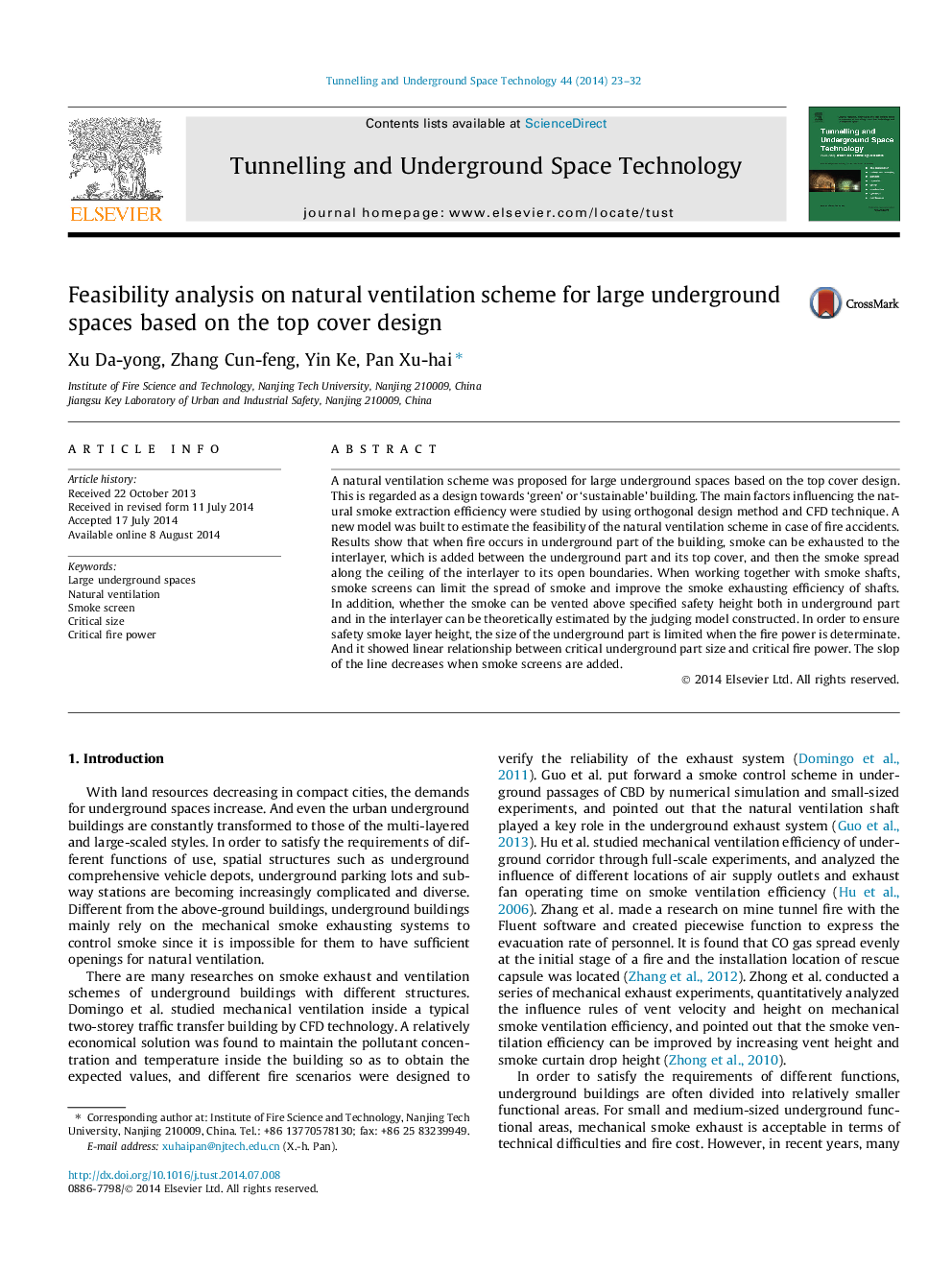| Article ID | Journal | Published Year | Pages | File Type |
|---|---|---|---|---|
| 312266 | Tunnelling and Underground Space Technology | 2014 | 10 Pages |
•A natural ventilation scheme was proposed for large underground spaces based on the top cover design.•The main factors influencing the natural smoke ventilation efficiency were studied by orthogonal design and CFD technique.•A new model was built to estimate the feasibility of the natural ventilation scheme in case of fire accidents.•The relationship between critical size of underground part and critical fire power was studied.
A natural ventilation scheme was proposed for large underground spaces based on the top cover design. This is regarded as a design towards ‘green’ or ‘sustainable’ building. The main factors influencing the natural smoke extraction efficiency were studied by using orthogonal design method and CFD technique. A new model was built to estimate the feasibility of the natural ventilation scheme in case of fire accidents. Results show that when fire occurs in underground part of the building, smoke can be exhausted to the interlayer, which is added between the underground part and its top cover, and then the smoke spread along the ceiling of the interlayer to its open boundaries. When working together with smoke shafts, smoke screens can limit the spread of smoke and improve the smoke exhausting efficiency of shafts. In addition, whether the smoke can be vented above specified safety height both in underground part and in the interlayer can be theoretically estimated by the judging model constructed. In order to ensure safety smoke layer height, the size of the underground part is limited when the fire power is determinate. And it showed linear relationship between critical underground part size and critical fire power. The slop of the line decreases when smoke screens are added.
